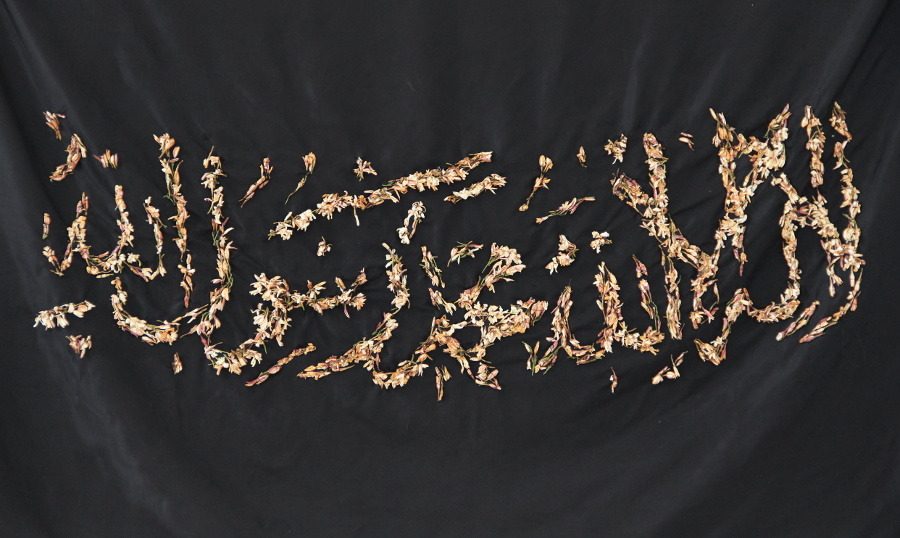Smell was created one year after the Tunisian uprisings of 2011, internationally branded as the “Jasmine Revolution.” The name was misleading: jasmine does not bloom in winter, and its fragrance was entirely absent during the protests. What filled the air instead were the smells of burning cars, tear gas, and unrest. The work questions this discrepancy between media-produced symbolism and lived experience.
Kaabi-Linke embroidered jasmine blossoms onto a black cloth resembling the Salafi flag, whose white calligraphy of the Shahada had become a new symbol of ideological pressure in post-revolutionary Tunisia. As the blossoms dry, fade, and lose their scent, the work reflects the fragility of freedoms still contested in the country.
After extremist groups attacked the Printemps des Arts fair in June 2012, Kaabi-Linke decided to donate Smell to a staff member of the National Museum of Carthage who identified as a Salafist. He told her that the work expressed his personal faith and asked to keep it after the exhibition. When the dried flowers began to crumble, he saw no problem; he said he would replace them himself, as part of his devotion.
His caretaking revealed how a single artwork can hold contradictory readings—critical, political, devotional—and how these can coexist within one object.




